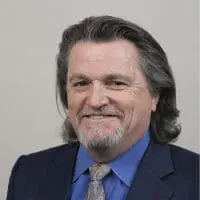Publication
Nevada Governor Sisolak’s Latest Directive Significantly Eases Restrictions on Public Gatherings
By Paul E. Larsen and Gil Kahn
At a press conference on September 29, Governor Steve Sisolak revealed the details of Directive 033, the latest order issued pursuant to his pandemic-related Emergency Declaration. Citing the lower rate of new COVID-19 cases relative to the peaks this summer, the Governor announced that Directive 033 would depart from three significant restrictions on public gatherings currently in effect: (1) a substantial increase to the 50-person limit for such gatherings, (2) the return of live entertainment, and (3) an allowance for limited trade shows and conferences. This legal alert briefly explores these developments, which take effect on Thursday, October 1, 2020, and notes what related restrictions remain in place.
More compressive guidance and examples can be found on the Nevada Health Response website: https://nvhealthresponse.nv.gov/wp-content/uploads/2020/09/Nevada-Guidance-for-Safe-Gatherings-Celebrations-Ceremonies-and-Events.pdf
Limitations on Public Gatherings:
The new Directive differentiates between venues with an occupant capacity over and under 2,500 guests, regardless of whether they are indoor or outdoor spaces.
For venues at or below a 2,500-person capacity:
- This category does not require fixed seating and guests are not required to remain seated.
- Such gatherings are limited to 250 individuals or 50 percent capacity, whichever is less.
- Social distancing must still be maintained, which, depending on the layout, may further limit total capacity.
- In venues with multiple rooms or buildings—e.g., a house of worship with a sanctuary and separate recreation room—each distinct area has its own cap of 250 guests or 50 percent capacity—meaning the entire venue can ultimately host more than 250 individuals. This rule does not apply to trade shows and conferences, which are addressed below.
For venues above a 2,500-person capacity:
- This category applies only to venues with “fixed seating” that would normally accommodate more than 2,500 guests.
- Such gatherings are limited to 10 percent of the seating capacity.
- Sections must be established with a maximum of 250 guests each:
- All sections must be at least 25 feet from each other
- Within each section, groups of individuals that registered together—e.g., a family—must be separated by six feet from every other group
- Guests must remain seated.
- Pre-registration or ticketing is required and seats must be assigned.
- Venues must submit a safety plan to a local health authority, which, upon approval, will forward the plan to the appropriate state-level oversight authority—e.g., the Gaming Control Board or Athletic Commission—for final approval.
- Other restrictions, including the availability of exits and restrooms, apply.
Live Entertainment:
Events such as live music and sports may resume with the following key restrictions:
- All the capacity restrictions above apply with the added restriction that guests in venues under a 2,500-person capacity must remain seated in designated seats.
- Performers or competitors must be at least 25 feet from the public and, if possible, socially distanced from one another.
- Venues using ambient music—e.g., a restaurant with a live singer—are exempt from these additional requirements and may continue operating.
Trade Shows and Conferences:
- Such events may take place with up to 250 guests or 50 percent of the venue’s capacity, whichever is less
- This cap increases to 1,000 total guests if, among other things:
- The venue has separate rooms, which are permitted to hold 250 individuals or 50 percent capacity;
- Venue staff can be assigned exclusively to the separate rooms and not intermix;
- The separate rooms have their own entrances and exits or can stagger arrivals and departures; and
- The guests pre-register.
Signage:
To facilitate these new guidelines, venues must post signs noting their capacity limitations. A template is available at: https://nvhealthresponse.nv.gov/wp-content/uploads/2020/09/Master-Signage-Docs.pdf
Unaffected restrictions:
The restrictions above apply to public gatherings only. Accordingly, restrictions on occupancy for businesses—e.g., retail stores, restaurants, etc.—and private residences are unaffected.
About Snell & Wilmer
Founded in 1938, Snell & Wilmer is a full-service business law firm with more than 500 attorneys practicing in 17 locations throughout the United States and in Mexico, including Phoenix and Tucson, Arizona; Los Angeles, Orange County, Palo Alto and San Diego, California; Denver, Colorado; Washington, D.C.; Boise, Idaho; Las Vegas and Reno-Tahoe, Nevada; Albuquerque, New Mexico; Portland, Oregon; Dallas, Texas; Salt Lake City, Utah; Seattle, Washington; and Los Cabos, Mexico. The firm represents clients ranging from large, publicly traded corporations to small businesses, individuals and entrepreneurs. For more information, visit swlaw.com.


